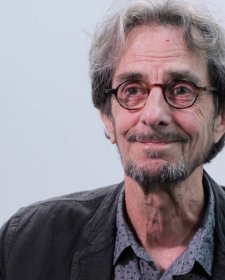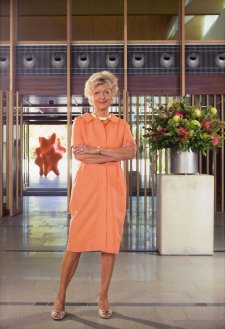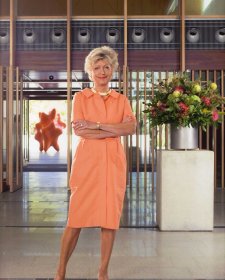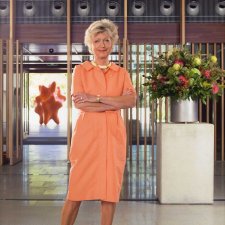- About us
- Support the Gallery
- Venue hire
- Publications
- Research library
- Organisation chart
- Employment
- Contact us
- Make a booking
- Onsite programs
- Online programs
- School visit information
- Learning resources
- Little Darlings
- Professional learning
George Tjungurrayi (b. c. 1947) is a highly respected senior Pintupi artist. Born around Walawala near Kiwirrkura in Western Australia, he spent his childhood in this region. In his late teens Tjungurrayi left the Gibson Desert and moved between Mount Doreen, Yuendumu and Papunya, where he settled from the early 1960s. In 1976 Tjungurrayi and his oldest brother Willy Tjungurrayi began painting with Papunya Tula Artists guided by senior Pintupi painters including Uta Uta Tjangala and Yala Yala Gibbs Tjungurrayi. Over the course of his career he developed his own style which focused on abstraction, a minimal colour palette and refined lines that undulate across the surface of his works. Tjungurrayi's paintings focus on topographical depictions of his Country and areas of cultural significance to Pintupi culture. From the 1970s Tjungurrayi, his wife Nanupu Nangala and their five children moved throughout the region settling in Kintore in the early 1980s where he continues to live and work. Tjungurrayi's work is held in a number of national and international collections, and was included in the 21st Biennale of Sydney in 2020.
From 2006 to 2010, Greg Weight travelled extensively through central Australia meeting and photographing contemporary Pintupi and Warlpiri artists. This photograph of Tjungurrayi is one of the portraits included in his resulting book Artists of the Western Desert (2011).
Gift of Patrick Corrigan AM 2020. Donated through the Australian Government's Cultural Gifts Program.
© Gregory Weight/Copyright Agency, 2024
Patrick Corrigan AM (130 portraits)



On one level The Companion talks about the most famous and frontline Australians, but on another it tells us about ourselves.



Greg Weight on working with Jiawei Shen, and starting out as a photographer.



Portraits of philanthropists in the collection honour their contributions to Australia and acknowledge their support of the National Portrait Gallery.